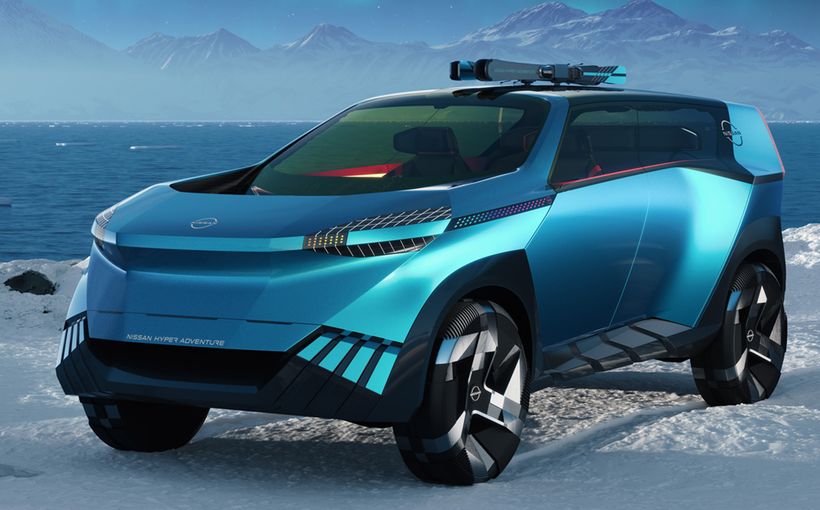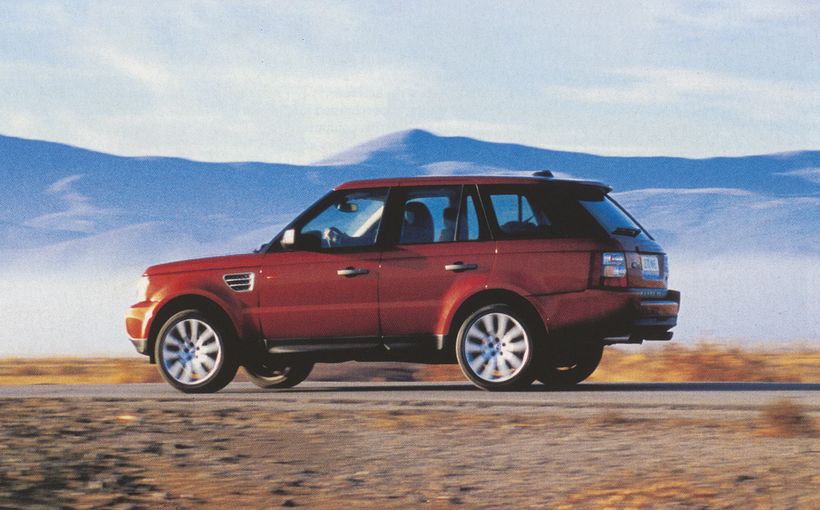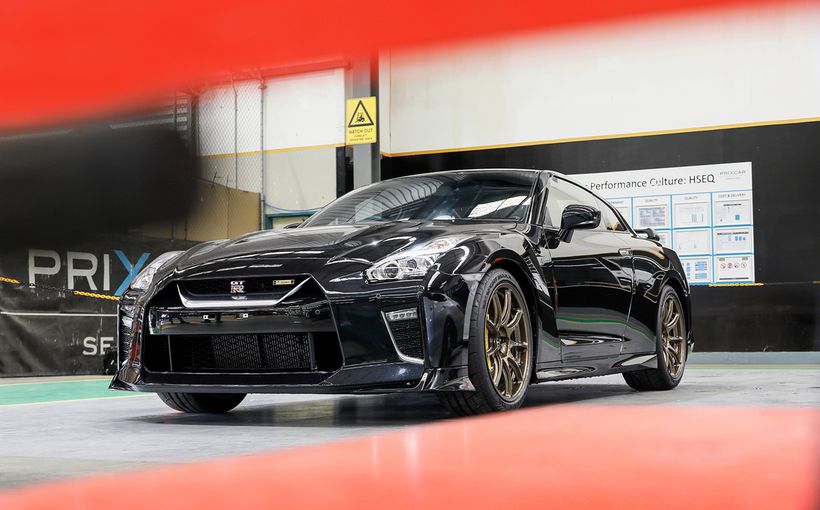
What days they were, back when men were men and sports cars were rear -drive. People raised on New Age sensitivity, political correctness and sanitised front-drive may have no inkling of what throbbing testosterone and power oversteer were all about. Poor souls. But the good news is that help's at hand for drivers old enough to yearn or young enough to learn. Meet the Nissan 200SX ... a fair dinkum rootin' tootin' sportsmobile that blends the spirit of the good old days with '90s realities and technologies.
Known elsewhere as the Silvia - a name traceable through many generations to a sportily specced, crisply styled, superbly finished little GT coupe that then-Datsun launched in the early '60s- the 200SX is an exciting newcomer that asks no beg pardons for thumbing its nose at the front-drive establishment. A rebel among today's stereotyped designs, the 200SX not only uses the 'traditional' front engine/ rear drive layout to good effect, but also cocks its snook at the anti-performance wowsers and insurers by flaunting a thrilling turbo motor. You thought turbos had run their course and out of puff? Nope, just out of fashion. The 200SX proves that the well-developed turbo is still alive and kicking.
Just being new and different isn't enough to assure success of course, especially not in a corner of the field where the competition is brutally tough between the mid-$30K to high-$40K marks. No place, this, for young players and the weak hearted. Despite strong and repeated assaults by Honda, Mazda, Holden and others, Toyota still rules this niche with the ever resilient Celica, whose lift back SX and ZR models currently account for more than 18 per cent of the sporty coupe segment. Now, however, besides having to fend off old and worthy rivals such as the Integra pair, Prelude trio, Calibra and four-wheel steer MX-6, the Celica faces a brazen threat from the three model 200SX range. As if that weren't trouble enough, Celica must also defend its market share against two other fresh and formidable challenges - one from Ford's American import, the striking, lushly specced Probe, the other a stripped version of the MX-6.

Though the Probe and 'standard' MX-6 attack from the high and low price levels respectively, they have more in common than their mutual desires to unseat the Celica. Different as the bodies appear, the mechanical elements are almost identical. The Probe comes from the same AutoAlliance factory (at Flat Rock, Michigan) which makes Mazda 626 and MX-6 for the USA, Canada and Taiwan. The new 2WS MX-6, the 200SX and Celica hail direct from Japan.
Bear in mind that there's some $10,000 between the extremes here since MX-6 2WS and 200SX Limited represent the opening price level, while the Probe and Celica ZR define the upper limits.
At $39,850 the base MX-6 is $6720 less than its upmarket sibling, having shed four-wheel steering, anti-lock brakes, cruise control, sunroof and CD player. Even so it's not threadbare, with its tinsel including driver's airbag, air-conditioning, metallic paint and driving lights as well as the usual power assistances and electric aids. All four have optional auto trans.
Up against the MX-6 2WS (and SX Celica), the $38,500 Limited edition 200SX is aimed at enthusiasts more interested in performance than a catalogue of features. It leaves that to the successively higher priced Sports (which adds driver's airbag, antilock brakes, security system, rear spoiler and leatl1er bound steering wheel) and the Luxury version which further includes front spoiler, passenger's airbag, sunroof and six speaker sound system with CD.

The modestly furnished Limited brings most of the basic niceties as well as standard aircon, with the prized turbo and viscous coupling limited-slip diff as bonuses. Oh, and you can have any colour so long as it's red.
At $45,450 the Probe is comparatively commanding value among upmarket coupes., with one model and one option (auto trans). Besides two airbags and most mainline items, the Probe has such detail touches as luggage net, extra instruments and push-button driver's seat adjusters.
Whichever way you look at the Celica ZR, it's pricey The $42,800 opener flatters to deceive - apart from car alarm and CD player it includes less than, say, the base MX -6. Add the test car's air-con, speed control, anti-lock brakes and sunroof, and you're looking at $49,640!
In this context, the Nissan may not have a big-P price. But it sure has big-P performance! Launched with about 3000 rpm underfoot, the Nissan absolutely lunges from the line and squirms its tail exuberantly as you pour on more power, leaving long twin black lines as smoldering witness to your departure. The headlong rush feels orgasmically sensational and seriously quick.
Our Correvit dispassionately outputs the telling numbers; like 0-100 km/h in a blistering 7.1 seconds and the 400 metre mark passed in just 15.3 ticks. They're two-way averages, mind. Yet, impressive as those highlights and the 200SX's other standing start times may be, we have a hunch that tweaking the tyre pressures and honing the startline technique could shave the averages to high sixes for 0-100 clicks and around 15 neat for the old quarter mile. Even without going to those extremes, the 200SX has enough anywhere, anytime off-line grunt to eat V8s for breakfast.

Loosely labelled as son-of GTR, the SR20DET four cylinder turbo isn't directly related to yesteryear's fabulous 4WD twin-turbo six, but follows the san1.e design philosophy and echoes some features such as hollow, sodium cooled exhaust valves, electronic knock sensor and oil-jet cooled pistons. Ignition is a direct system with a small but powerful coil atop each platinum tipped spark plug, and the fuel injection is a sequential system to feed each cylinder in turn. Light alloy head and block help keep the fully dressed engine (complete from front pulley to flywheel) to a lean 177 kg.
The bottom of the block is reinforced by a bolt-in truss spanning the five main bearings. Overhead drive is by chain to two camshafts, the inlet with Nissan's variable valve control system to alter cam timing and so widen the beefy torque band. The maximum torque is in1pressive enough with a robust 265 Nm at 2800 rpm, all the more so because even down at 2000 rpm it's already pushing 200 Nm.
Much credit for the Nissan's exciting performance goes to the highly developed intercooled turbo system which marries a comparatively large turbo with small-ish intake venturi to an electronically controlled wastegate which maintains boost pressure while minimising the dreaded (if overrated) throttle lag.

Even so, rolling start tests show that the Nissan yields to its rivals through the 40-70 km/h increment before getting into stride and blowing 'em away from 70 or so and above. After noting the 200SX's fluid but slightly slow initial response until the tacho has at least two grand behind it, our crew adopted a So What? attitude; when the boost (soon) comes, it more than compensates for the preceding pause. Once spooled up, the Nissan's rolling response is crushingly convincing because the lead it opens over the others isn't measured just in tenths but sometimes a second or more.
The Nissan's alacrity is all the more impressive when you know that the PI9be and MX-6 are far from slow. And the Celica has its moments too. Familiar from the TX5 and 626 models as well as the 4WS MX-6, the 2.5 litre quad cam V6 is a bewitching blend of syrupy smoothness and effervescent energy It just loves to rev and when spurred has no hesitation in rushing to and through the tacho's red patch.
Though the maximum torque is delivered at fairly high revs, the V6's dual length intake manifold helps provide muscular and broad response from middling revs right through to the peak. It's one of the few modern engines that sounds sporty too. The MX -6 has a light bright note to the exhaust, while the Probe's (different) system emits an evocative rasp; well worth lowering the window for an entertaining earful.
The Probe and MX-6 also share the same transmission, but a different final drive ratio makes the Ford slightly lower geared than the Mazda which has a perceptible weight advantage. Even so, there's not much between their standing start accelerations, with the Mazda edging to the smallest of leads. Its weight advantage really tells in rolling response since the MX-6 clearly shades the Probe through our timed increments.

The Celica turns in some respectable times in the rolling start brackets and is almost on the pace, but generally finishes a close fourth to the Probe. That's a sight better than its outright acceleration where its fourth place is distant and grudging. Besides being the smallest engine here, Celica's is the weakest, coarsest and far the noisiest when duty calls. With only 100 kW and 196 Nm at its command, it hardly lives up to its injected twin cam, multi valve specification, let alone the sporty intent.
The 200SX has the same 7000 rpm redline as the Mazda and Ford but pulls taller gearing and higher speeds; it's as fast in fourth as the MX -6 and Probe in fifth, and can climb to 235 km/h in top gear, making it the fleetest 2.0 litre in our experience.
One would have to be unrealistically picky to find fault with any of the gearshifts. The 200SX and MX-6 in particular have light, quick and positive action that makes changing a snip in either direction. The test Probe's ·shift was a tad heavier than the Mazda's, and stickier from slot to slot. The Celica's action, a touch mechanical and notchy through the gates in everyday driving, travels as fast and surely as you could wish when the pressure's on.
The Nissan's comparative thirst on test, culminating in 10.9 litres per 100 km average (against the Probe's 9.2, MX-6's 9.7 and Celica's 9.1), is a reflection not so much of habitual gas guzzling as the car's blistering performance and the drivers' frequent use of it. Even when the Nissan's pedalled really hard, its consumption is pretty good in relation to the performance delivered. Immediately before joining the test convoy, the 200SX completed a brisk yet unhurried cruise at 7.9 L/100 km (35.6 mpg) which shows another, perhaps more generally representative side of its character. In sum, the economy is acceptable for the performance, and even the need for (costlier) premium petrol is tolerable in this case. If you have to ask ...

While coupes are largely about feel-good image and cosmetically sporty perceptions, these four also provide the sort of driving pleasures that encourage you to flee town and head for the hills or wide open spaces. They ride comfortably, handle well and are almost as much fun squirting between the corners as hustling through them. Even the Celica wins friends through the bendy bits thanks to chassis dynamics which are right up with the best of them; the only pity being that its strengths in those areas underline the comparative paucity of its engine.
Besides being a real goer, the Nissan is also a powerful stopper thanks to big brakes borrowed from the larger, heavier 300ZX. A good firm, progressive pedal adds to the 200SX's impressive brake-ability which is tempered only by the lack of the anti-lock system reserved for its more upmarket siblings. The MX-6 also has arresting binders, boasts very confident pedal feel and lacks ABS. In fact Probe is the only model here with ABS as standard. Its brakes are very effective but the pedal, not unusually in anti-lock systems, has comparatively long and mushy travel which detracts from driver confidence in demanding conditions. By ABS standards the Celica's optional system has a fairly positive pedal that lets you brake late and hard in the knowledge that the stopping's optimal on sealed stuff and also particularly well attuned to soft and/ or loose surfaces.
The three front-drive models have strut suspension at the rear, each unit located by two lateral arms and a longitudinal link. The 200SX differs by virtue of a wishbone style multi-link suspension inspired by those of the GTR and 300ZX. It works a treat. Aided by a smoothly effective viscous-coupling cliff that distributes the drive equitably regardless of the tyres' grip, the Nissan's rear end keeps the rubber firmly planted and pointing where it ought. The result is a fair dinkum driver's chassis, a good handling package that turns in to corners very decisively and ordinarily develops just enough understeer to lend a sense of confident surety and balance to the immensely adhesive roadholding.
In best rear-drive tradition, the handling is telegraphically predictable and very forgiving; allowing the 200SX's attitude to be readily adjusted or its cornering corrected, with finely precise steering and/ or throttle control.The tyres' grip and chassis balance are such, and the power delivery so smoothly exponential, that when charging from corners whoopsy power oversteer is rarely a factor unless provoked by more boot than brain. Pedalling the 200SX briskly, you can rush through the bendy bits with the sense of satisfaction that comes from having the right tool for the job, and doing the job well.

Critics of coupes say they're cars for the selfish and indulgent, really only two seaters with severely compromised rear accommodation. Which probably is true, but we can live with it. The fact is that coupes satisfy some enthusiasts' or poseurs' needs, and the rear seat doesn't get smaller after you buy it. It may seem so, of course, if you try stuffing two large adults back there. But three of these cars are actually reasonably accommodating for short to medium rear passengers providing they are fairly limber and the duration isn't great. The Celica is roomiest in that regard, but our volunteers agreed the MX-6 has the better bench. The 200SX's rear pew didn't rate because they couldn't fit. Its knee room is as pinched as a Prelude's. No amputee jokes please. Even the other models fall short on realism by omitting rear handholds and centre armrest.
However, as in the proper and natural order of things, drivers and front passengers fare pretty well in these cars. Even the most basic (MX-6 and 200SX Limited) are more than tolerably appointed. The Nissan sits you lowest and sportiest. Close your eyes and you could almost be in a Prelude.
The 200SX has comfortably supportive front buckets even though they lack cushion height/ angle adjustment. If anything, the others' buckets are more shapely and supportive, especially in the Mazda and Toyota, both with excellent tilt control which gets your bum deep into the bucket and brings great under-thigh contact. For drivers, Celica's weakness lies in the backrest with a small-ish rotary knob for angular adjustment and the usual lever instead for backrest release. The Probe not only has a deep sided, well-padded pew, but elevates the comfort quotient with push button adjustable lumbar support and side bolster grip which spreads for big bums or tightens to hug slim hips.
Celica's first out of the ring m this contest. Not without merit, the ZR has looks, chassis dynamics, build quality and the name going for it. But poor performance, noise in some volume and unjustifiably high price seal its fate in the final analysis.
The Probe is the better buy for upmarket shoppers. It drives just as well as the Celica, performs much better and more quietly, is better equipped, equally well built and costs considerably less. In the over-$45,000 sector it's a winner on points.

The decision is much tighter in the under-$40K division. The MX -6 2WS emerges from the ruck as the most inviting all-rounder here, but only just tipping out the 200SX by virtue of its comfort, quietness and consistency Keenly specified and combatively priced, the MX-6 performs with real flair and refinement, and makes a practical and enjoyable package.
The 200SX is a great driver's car with sizzling performance to spare and chassis dynamics to match. But cars are about more than just that. We have a few niggling reservations because the styling doesn't do a lot for us (don't mind the rear half, but the front is b-1-a-n-d), and you know how insurers regard turbos. The smallish boot, smallest rear seat and basic buckets also fritter points away.
After much debate, we rated the 200SX as the highly commended runner-up. We really grew very attached for the sheer enjoyment and high quality of its driving - on those counts it's a winner for sure.

Go Back in Time with the Wheel Archive. Get FREE access to 5 years of Wheels archive content now!
Protect your Nissan. Call Shannons Insurance on 13 46 46 to get a quote today.









